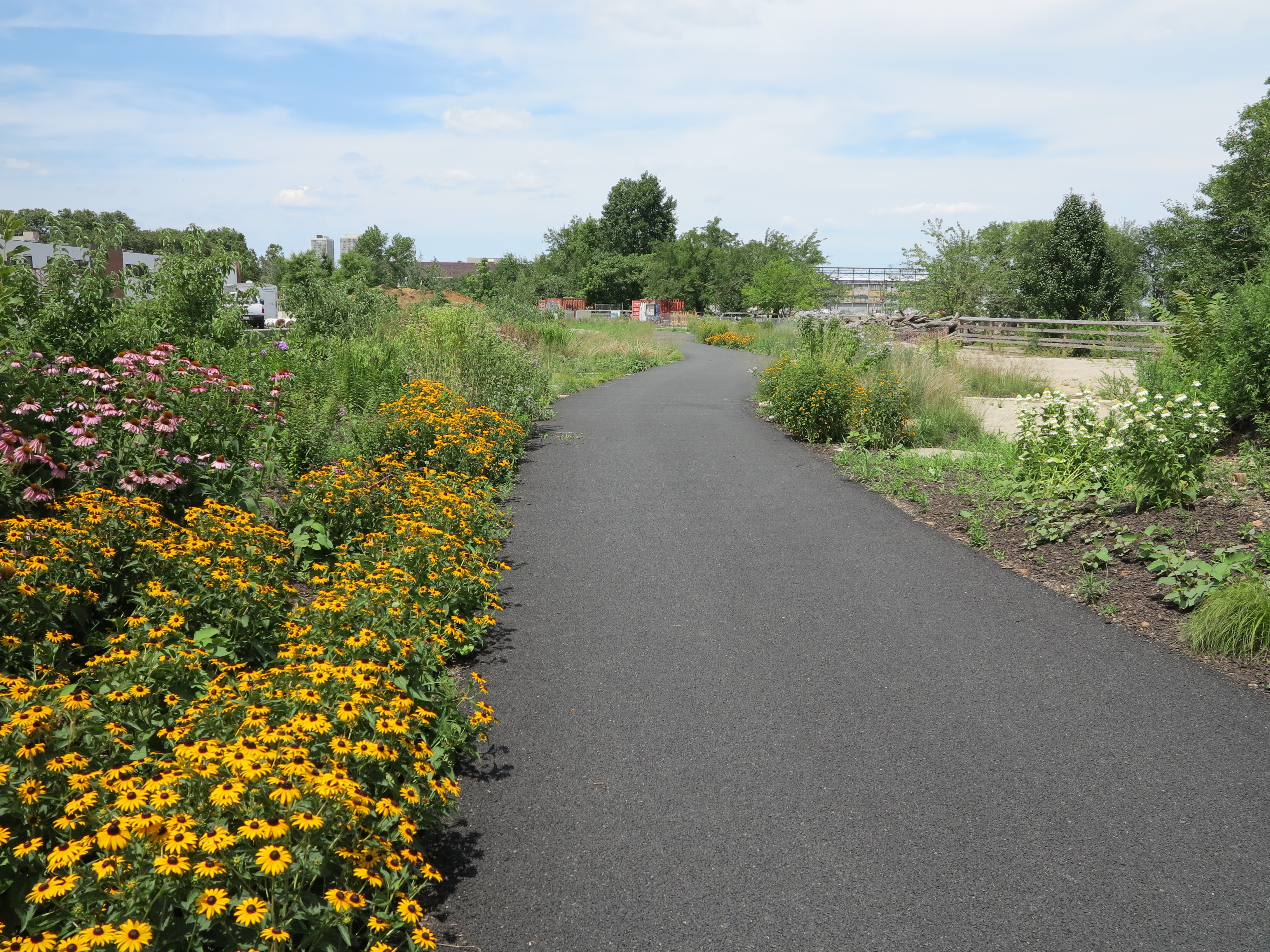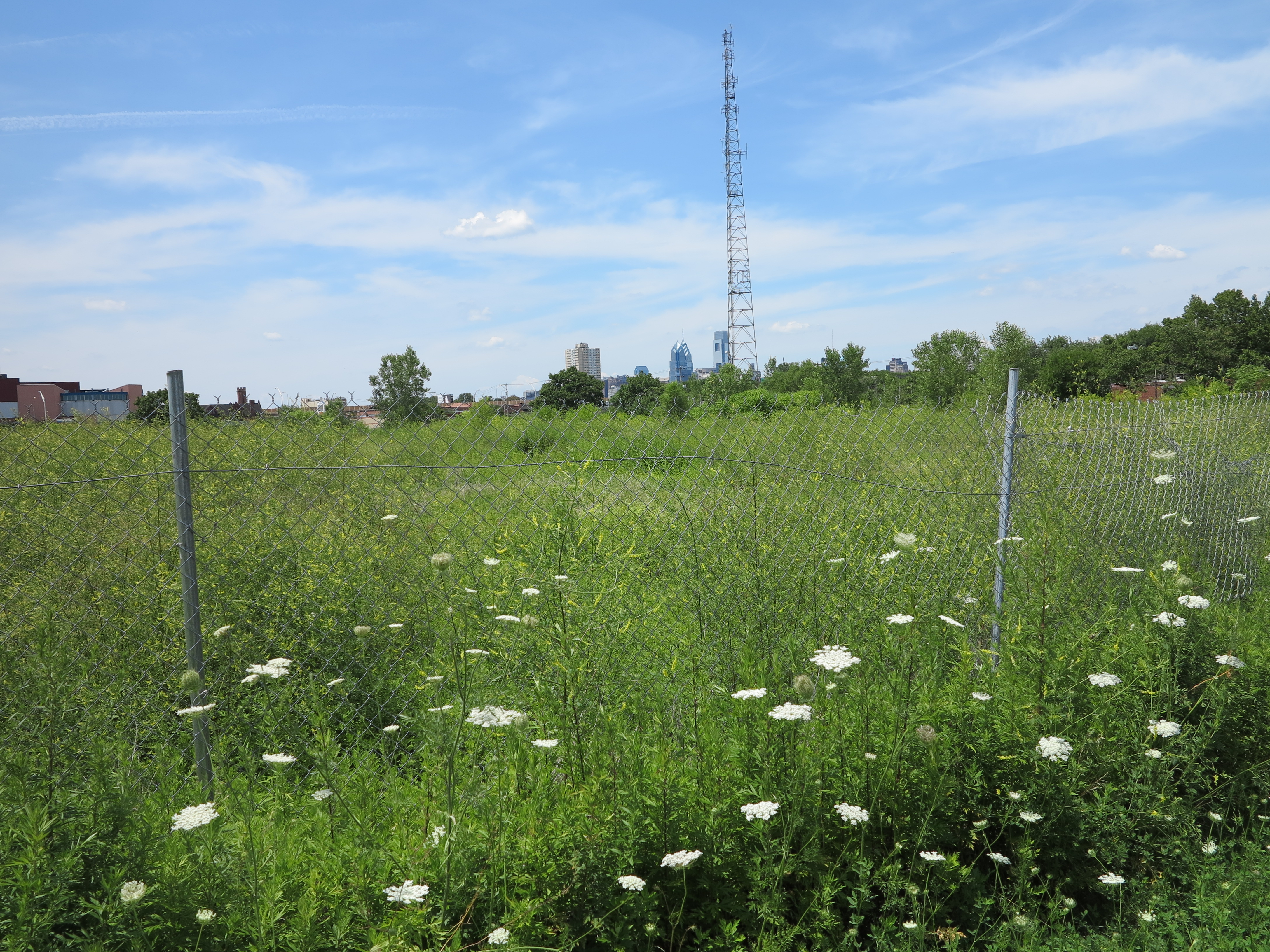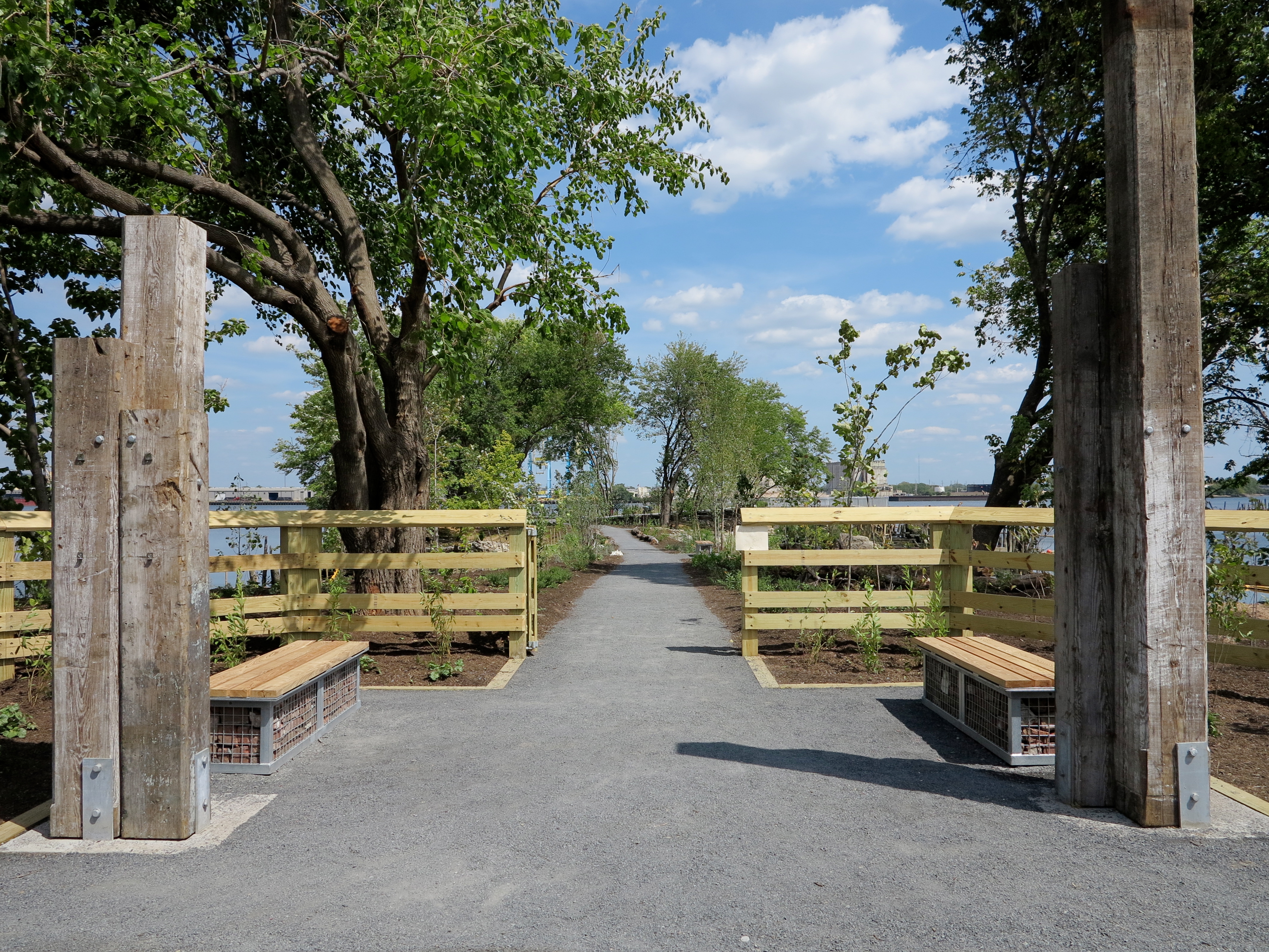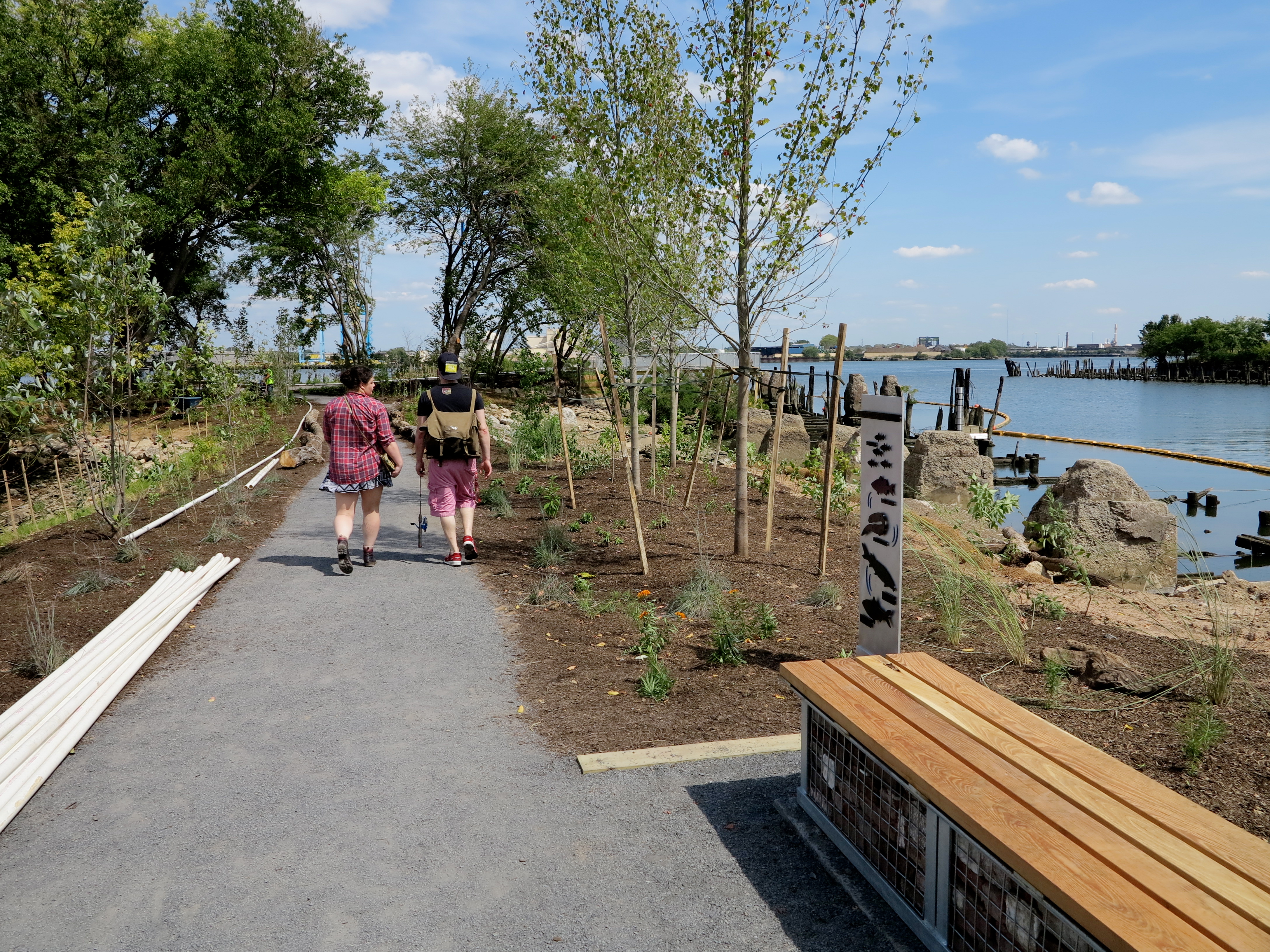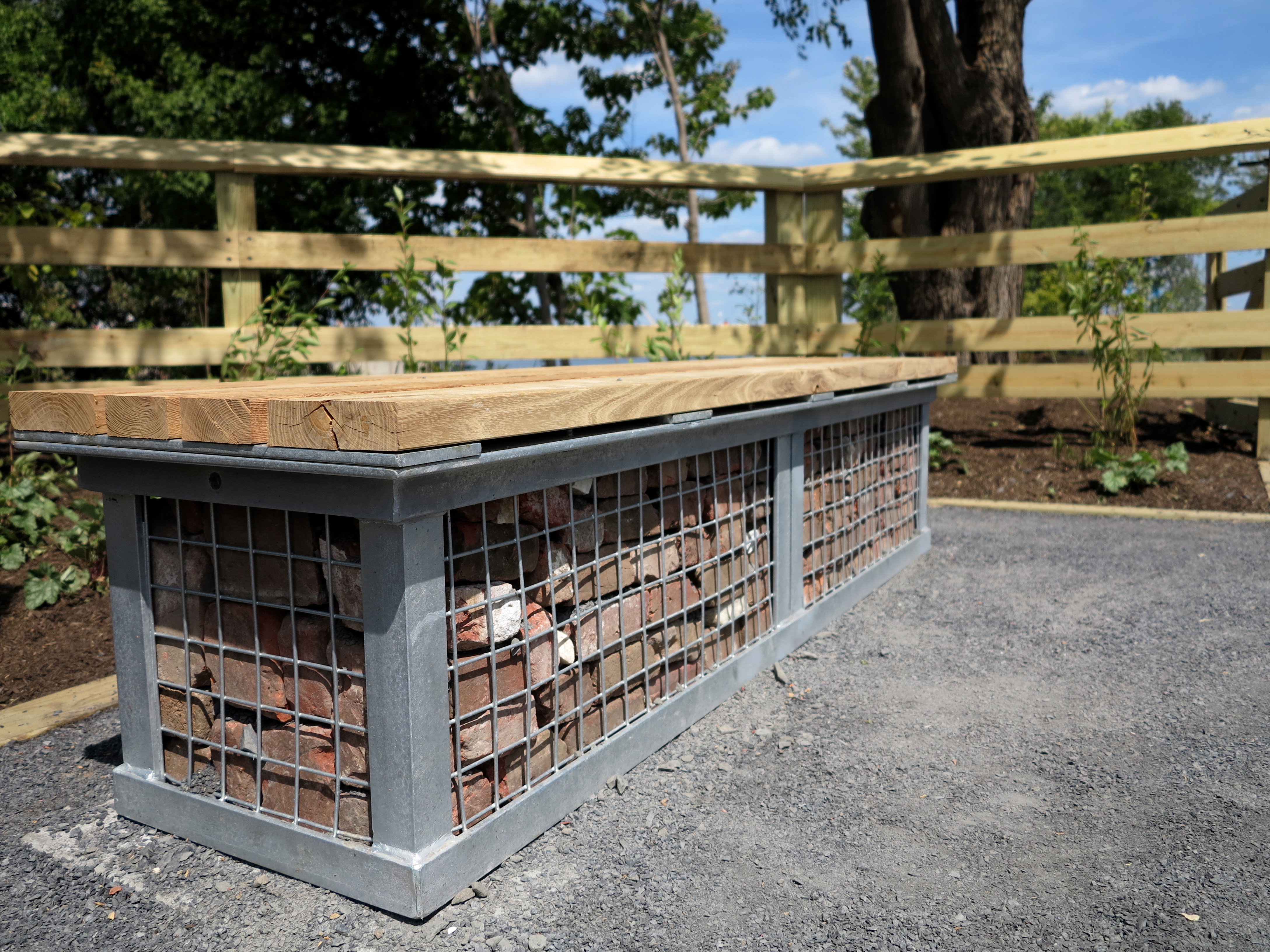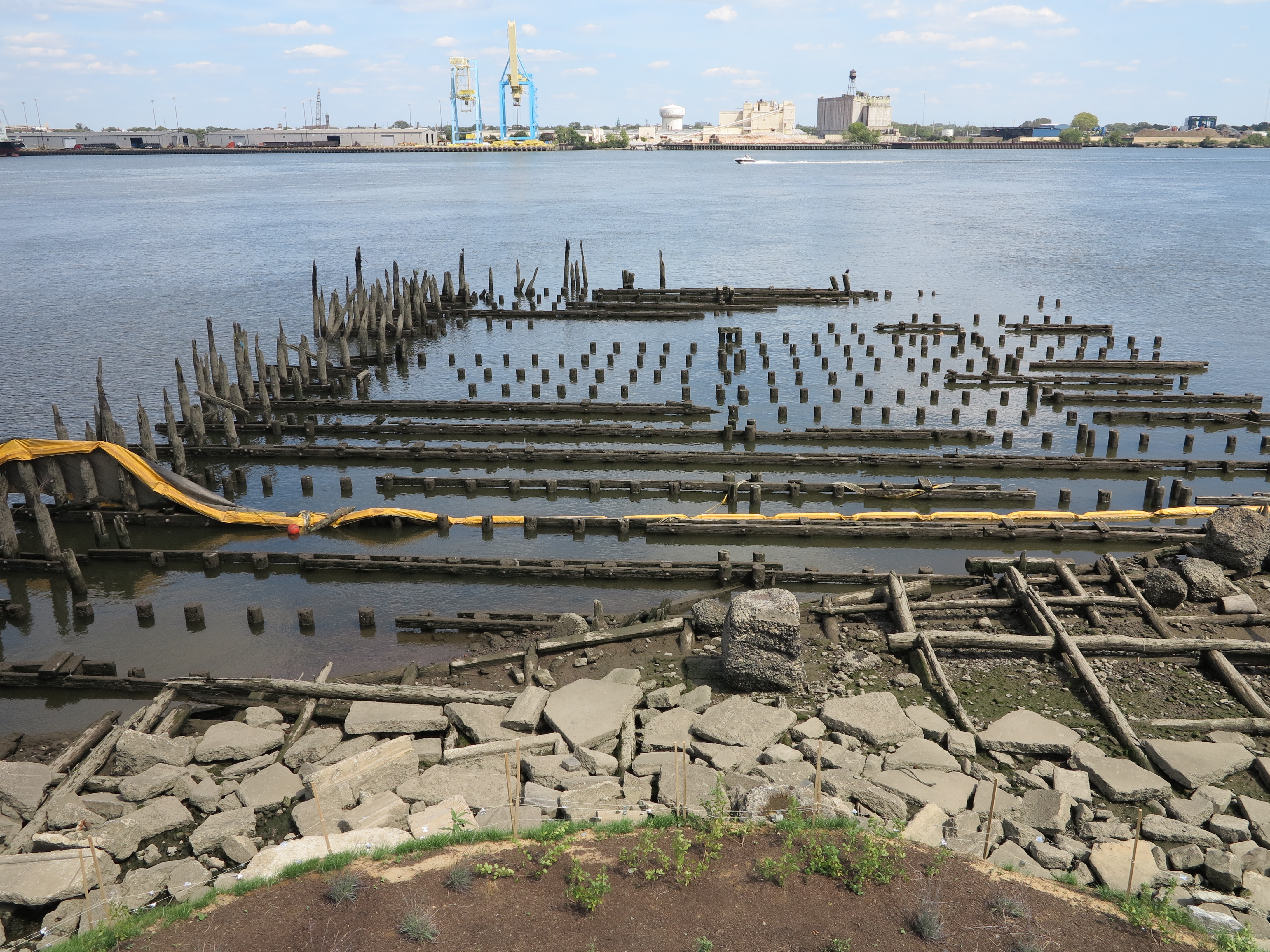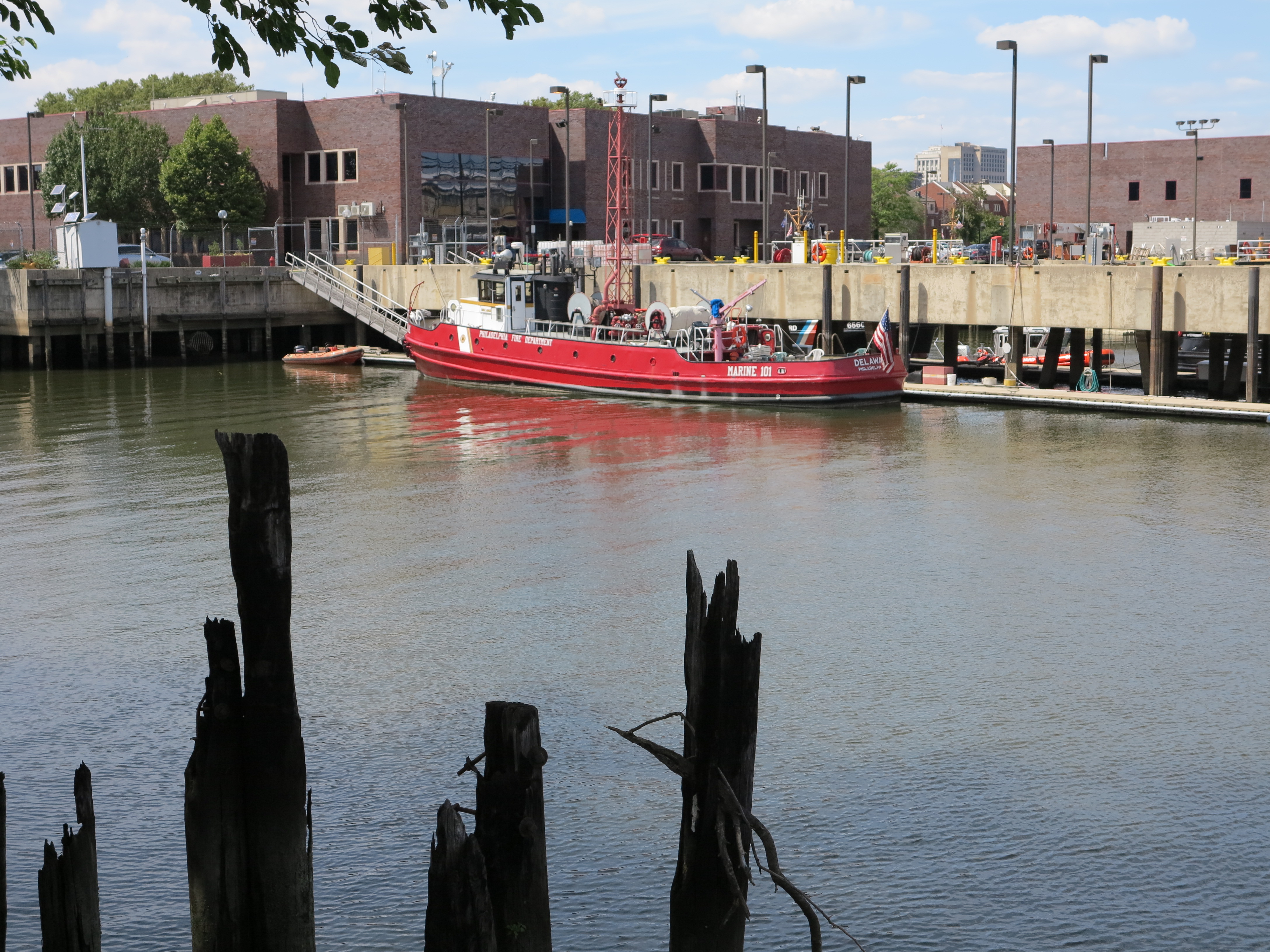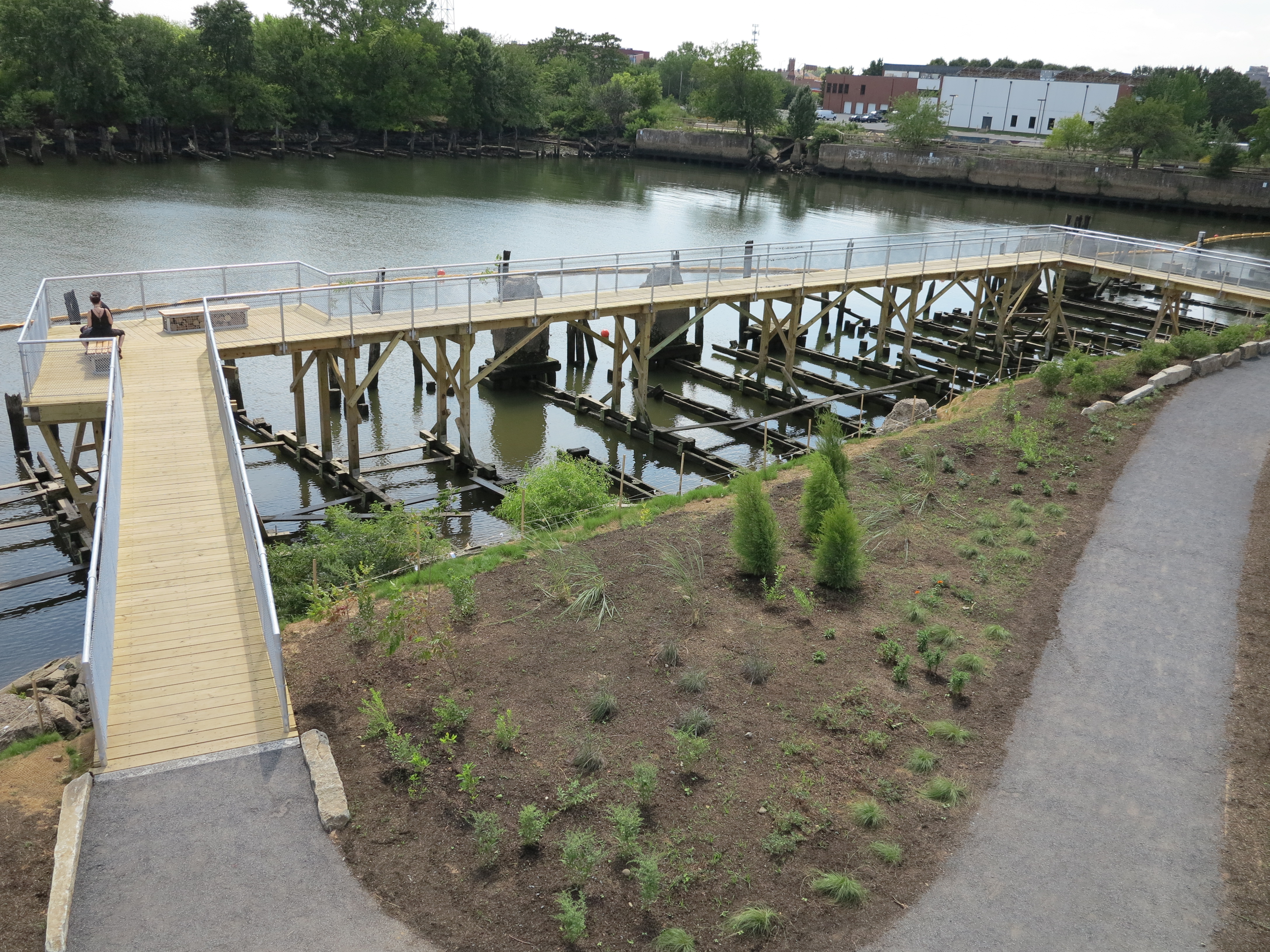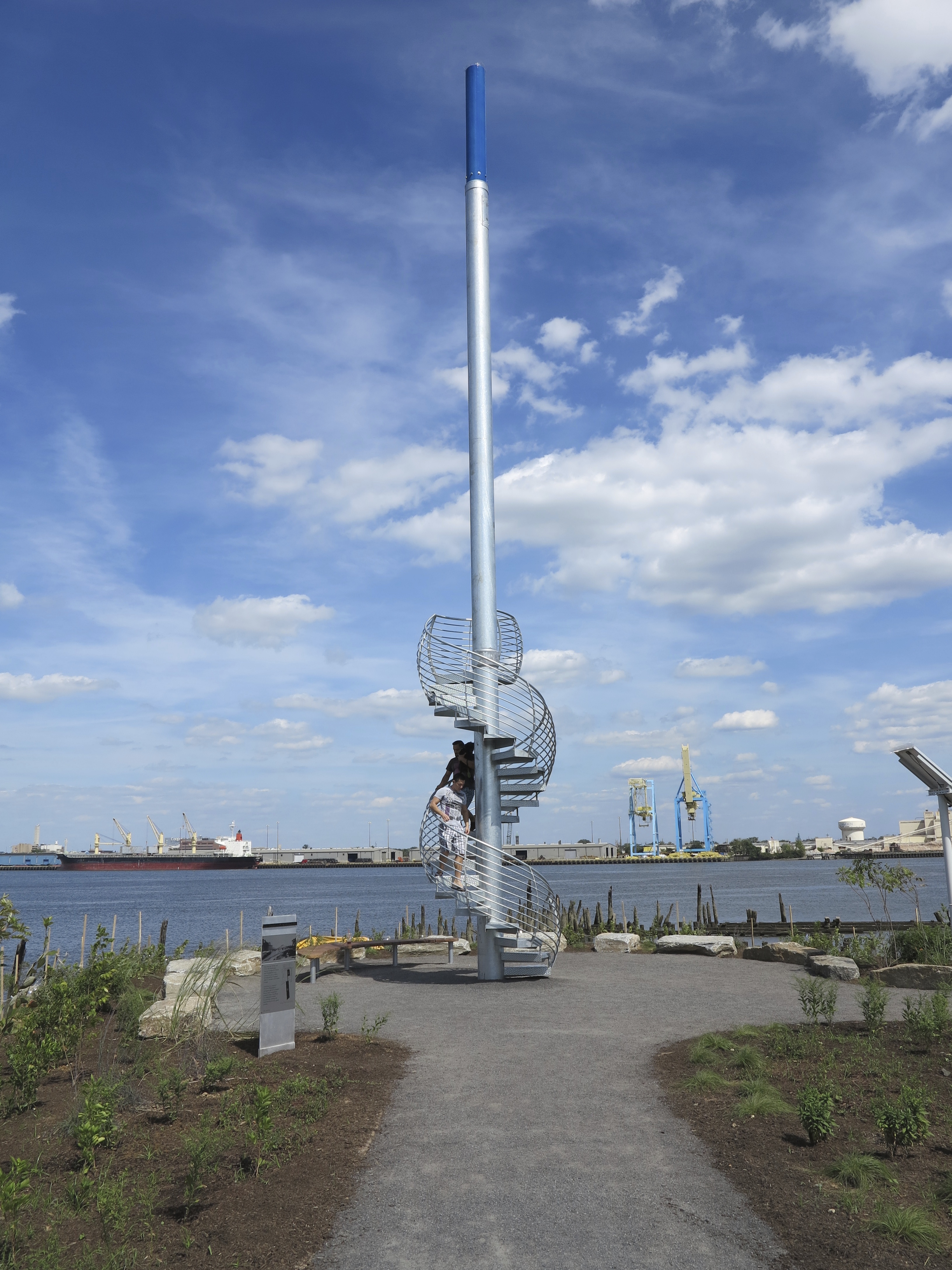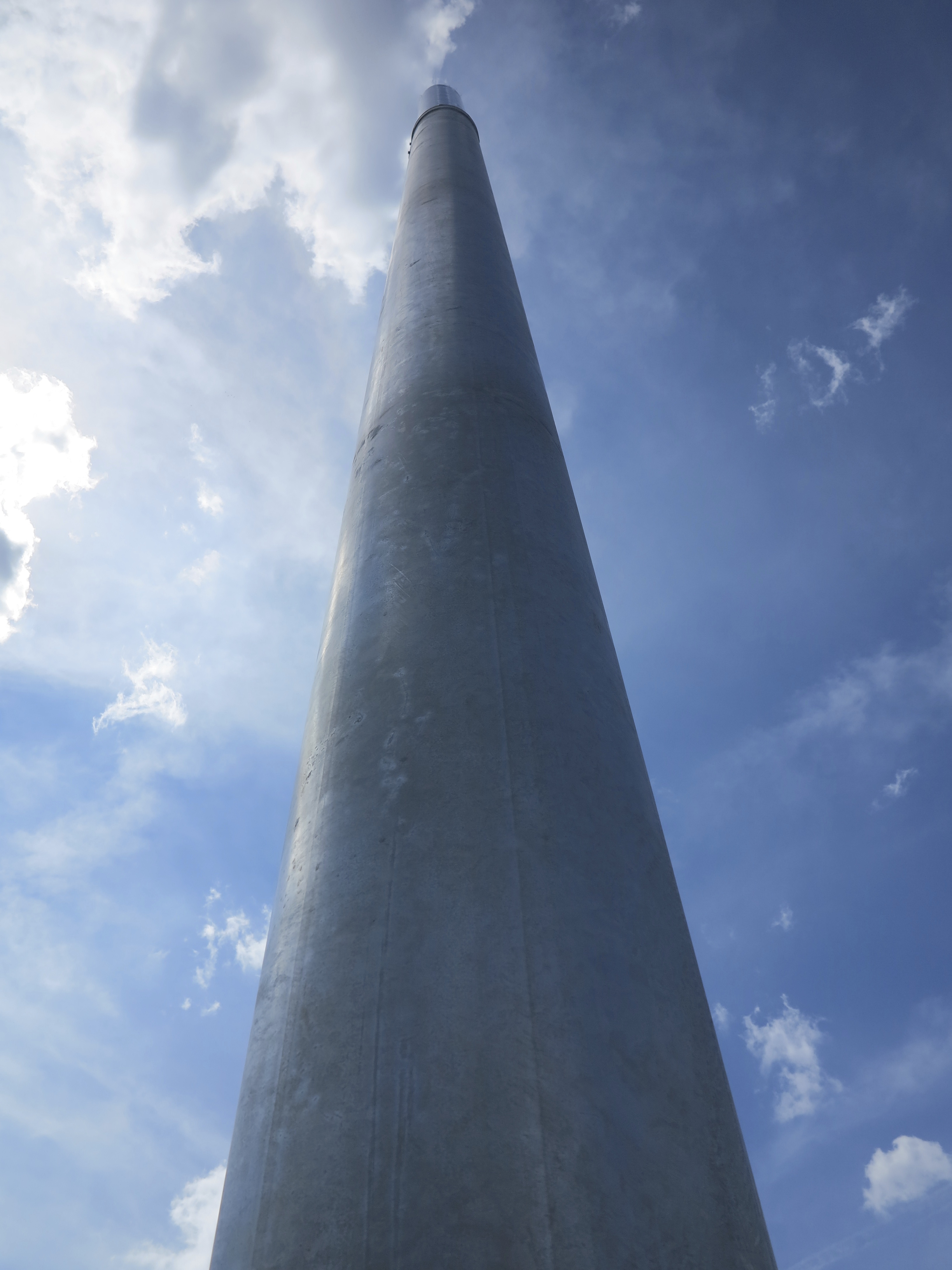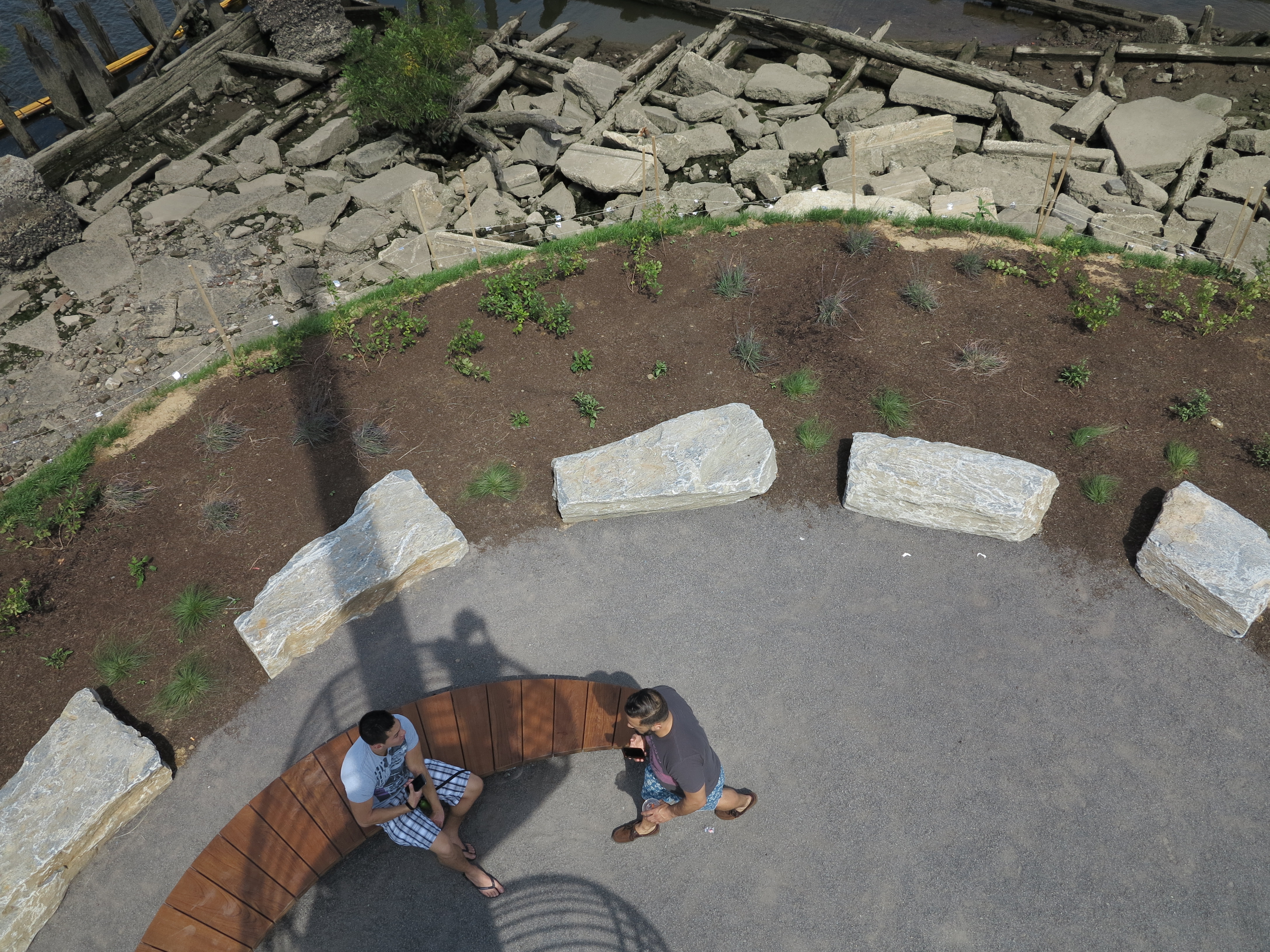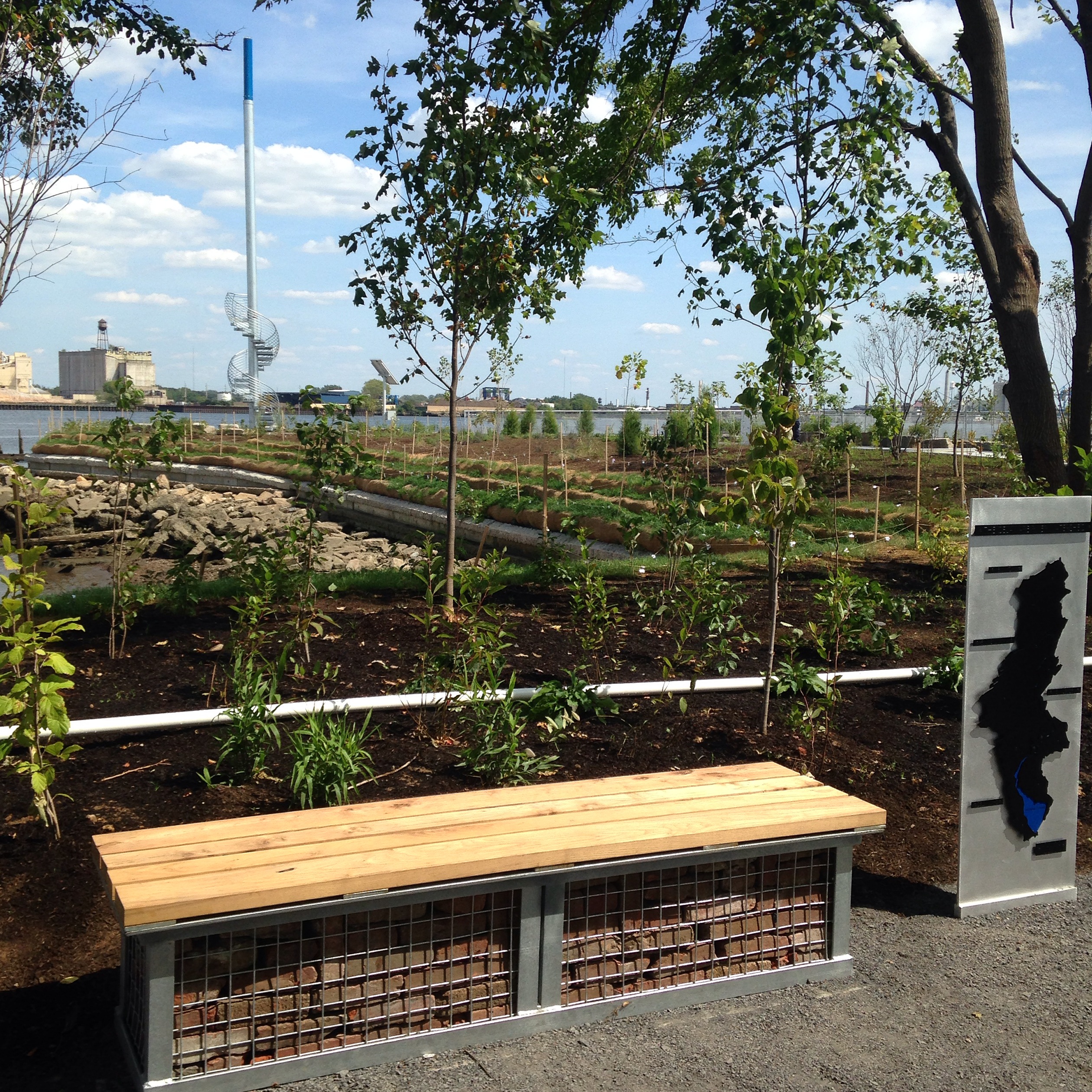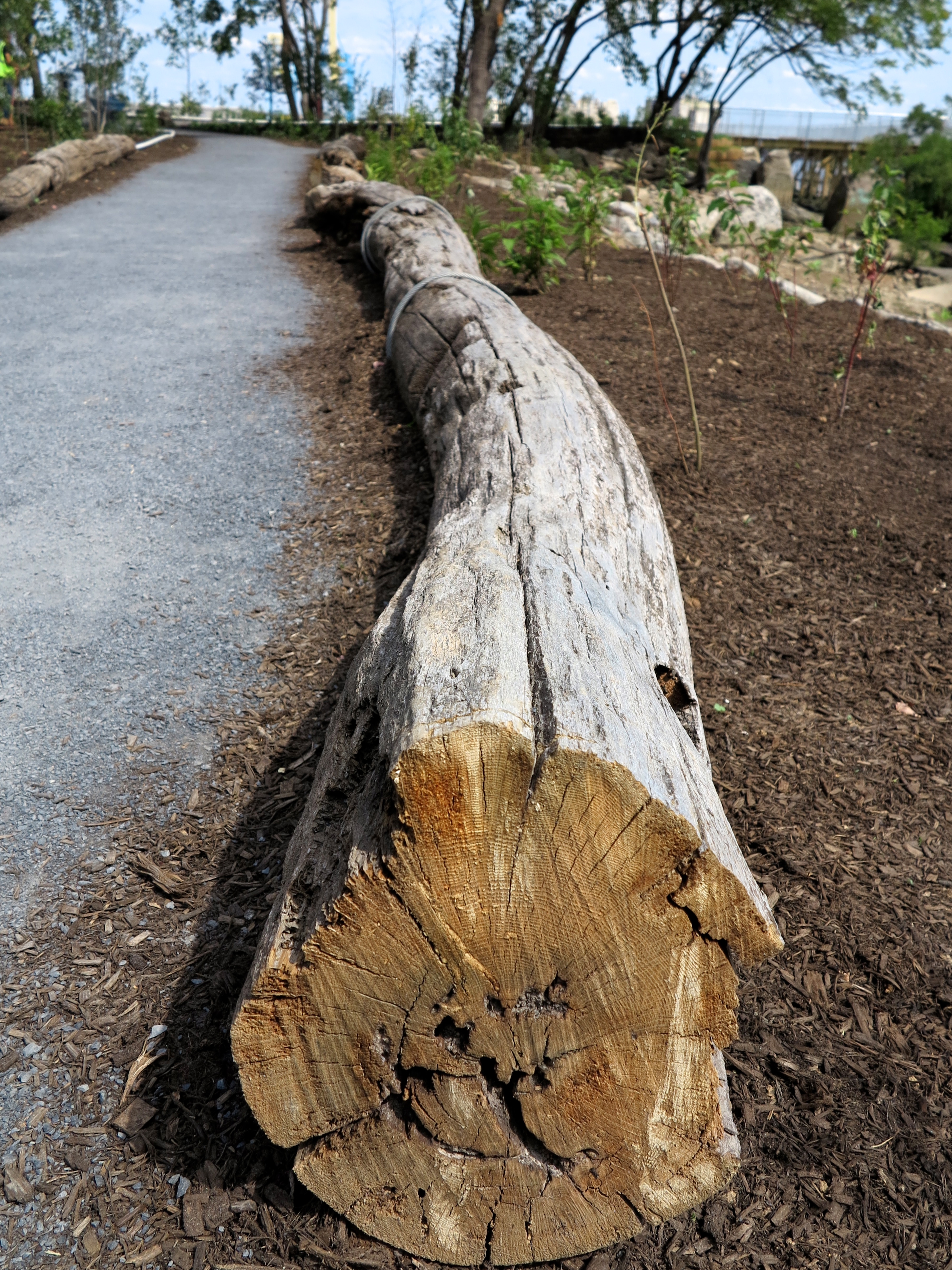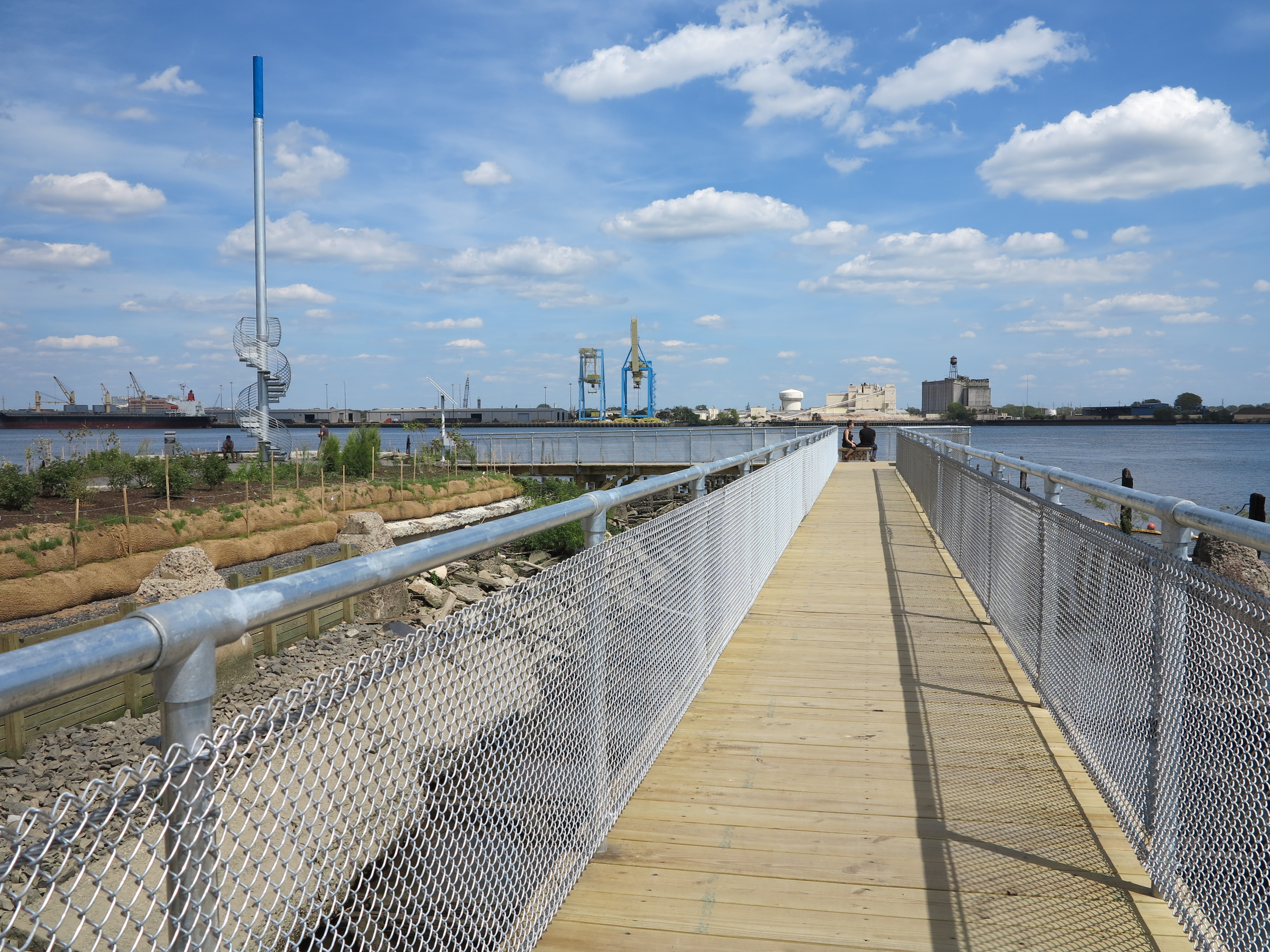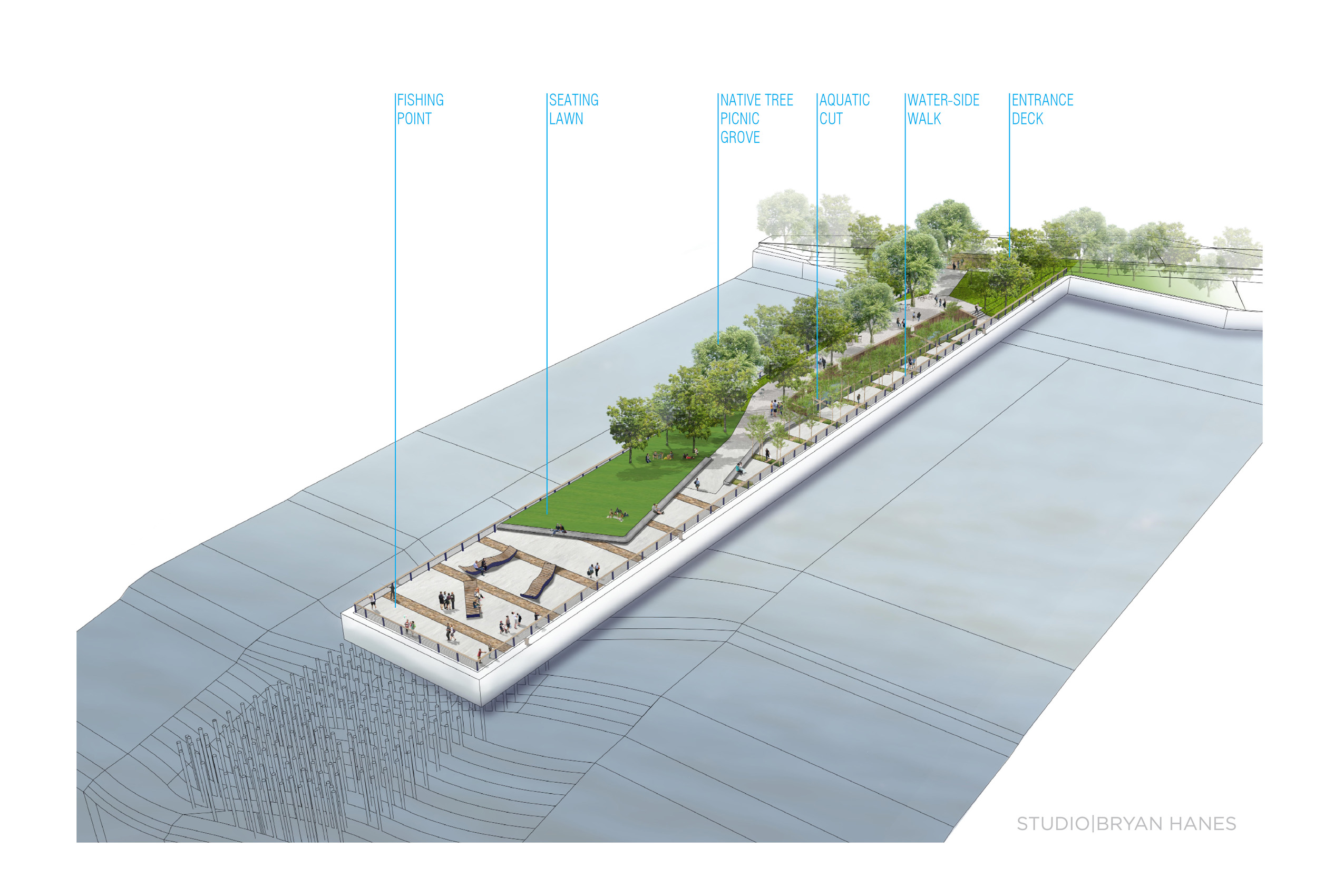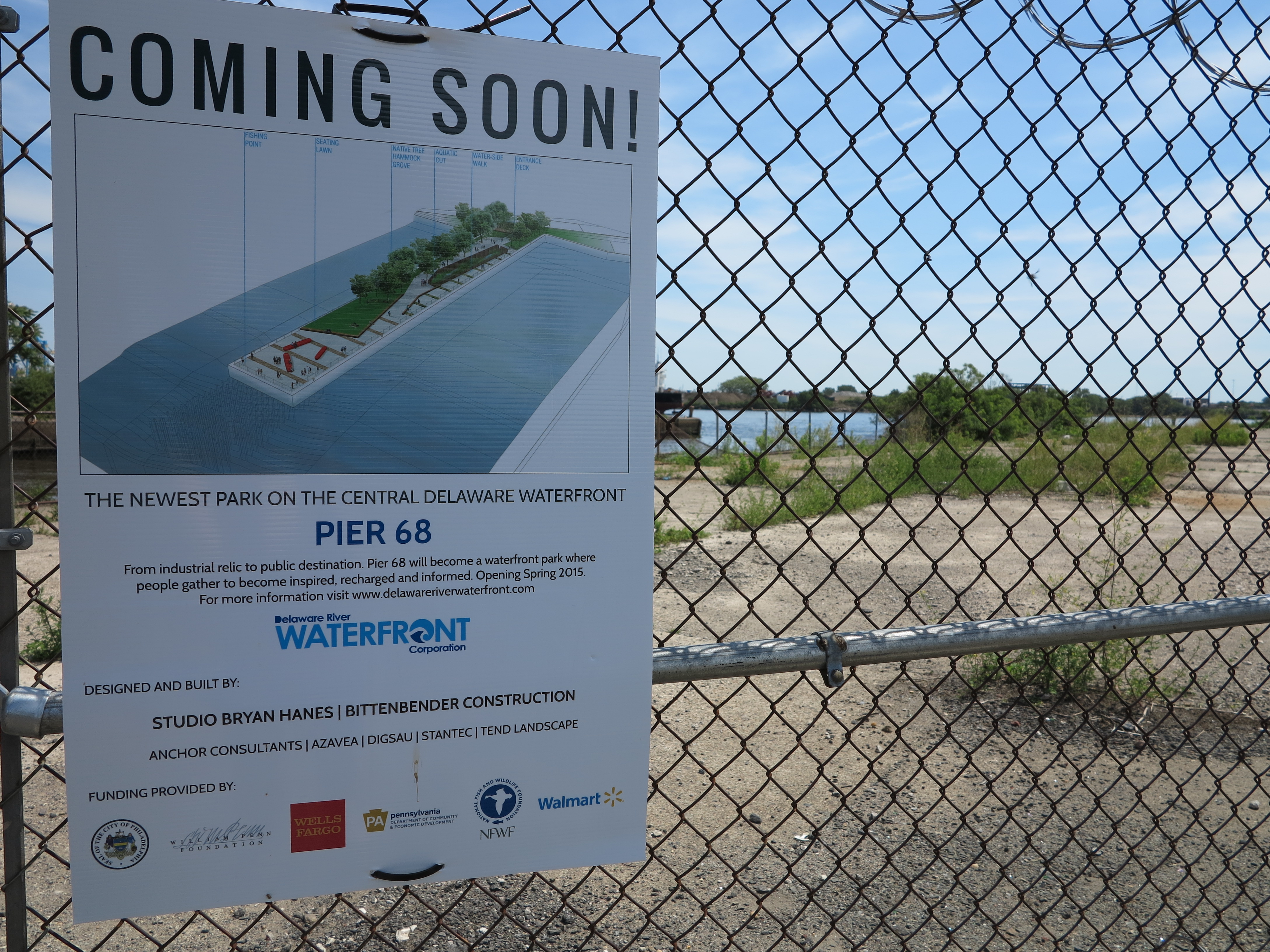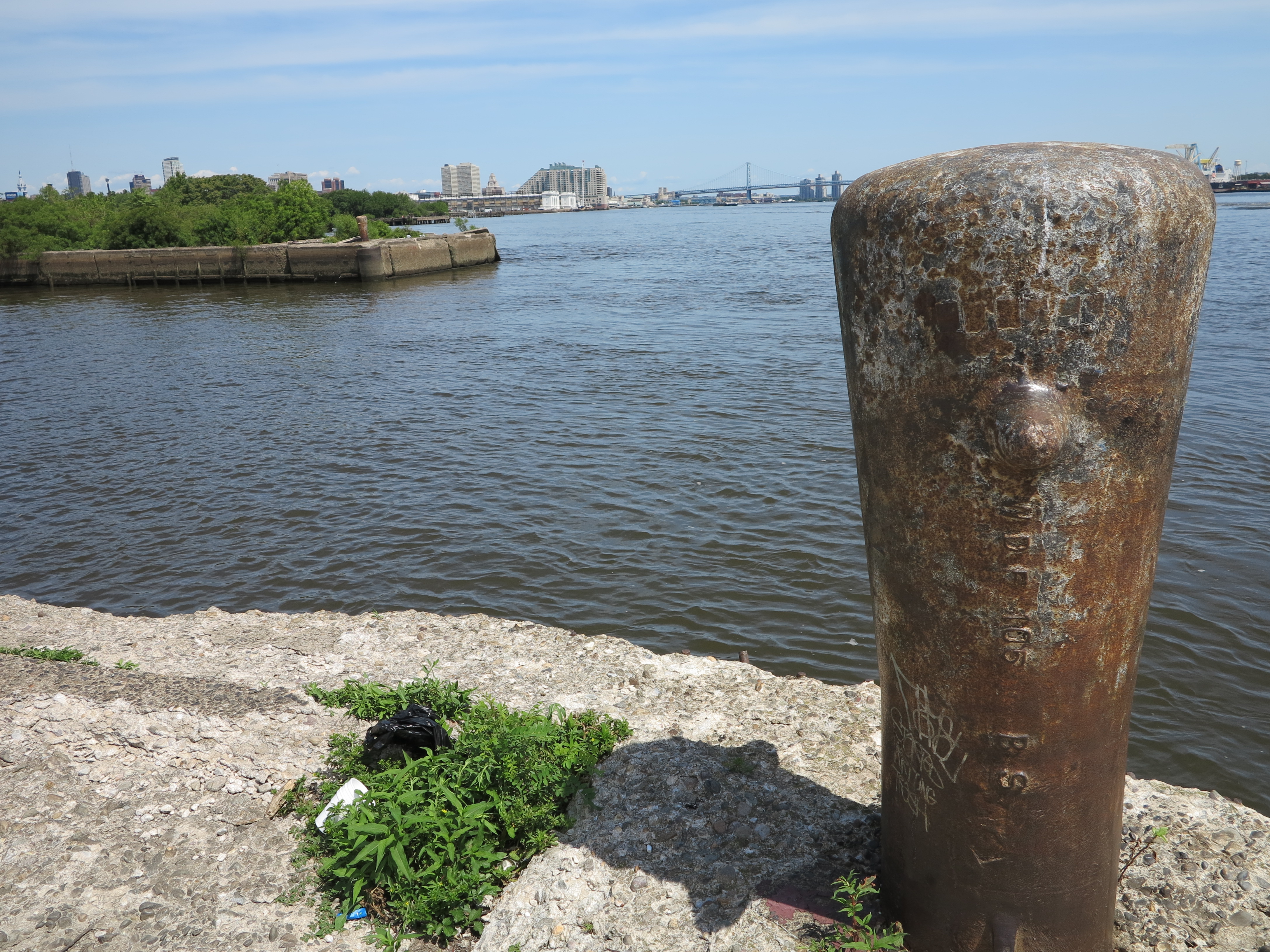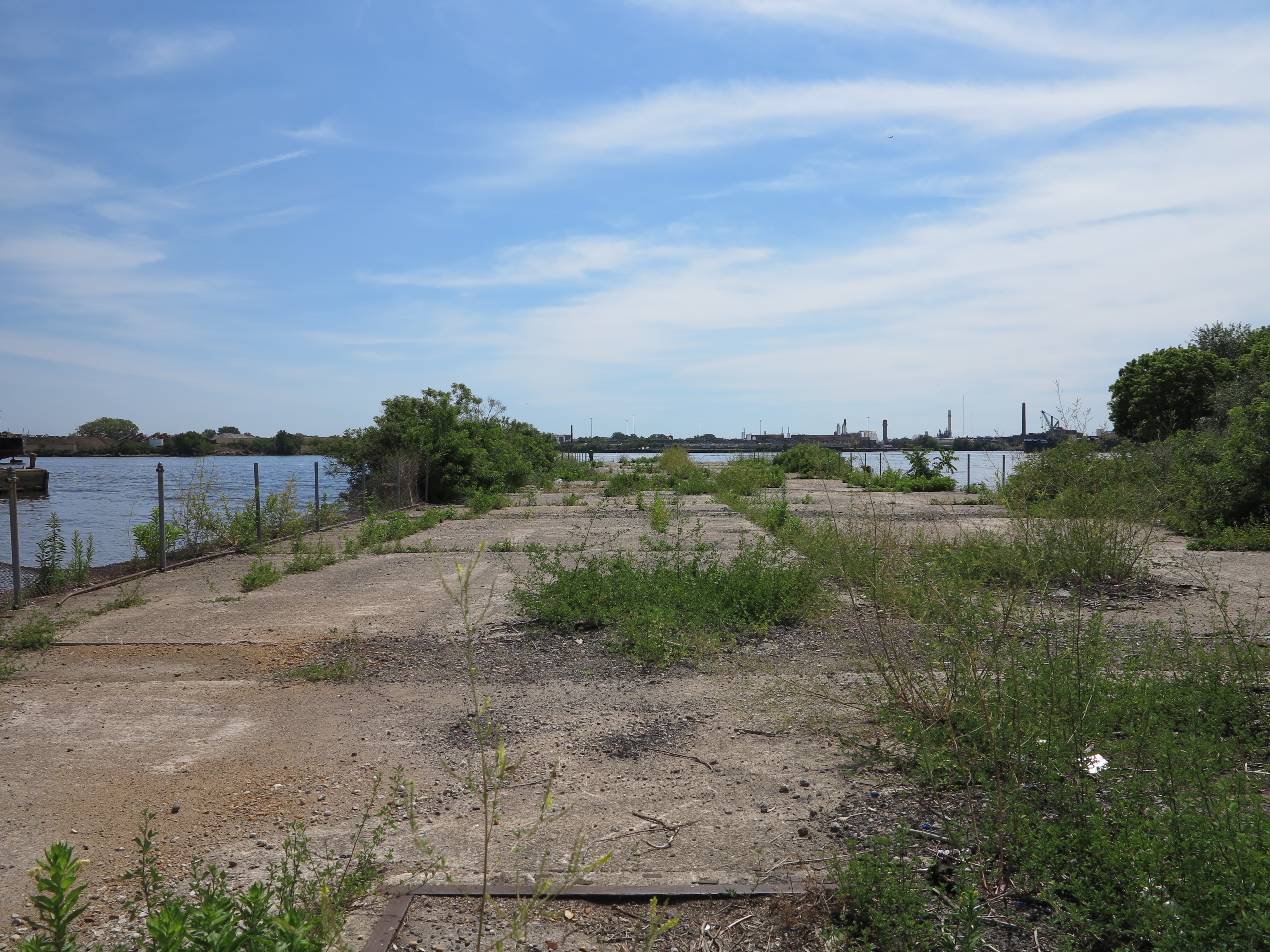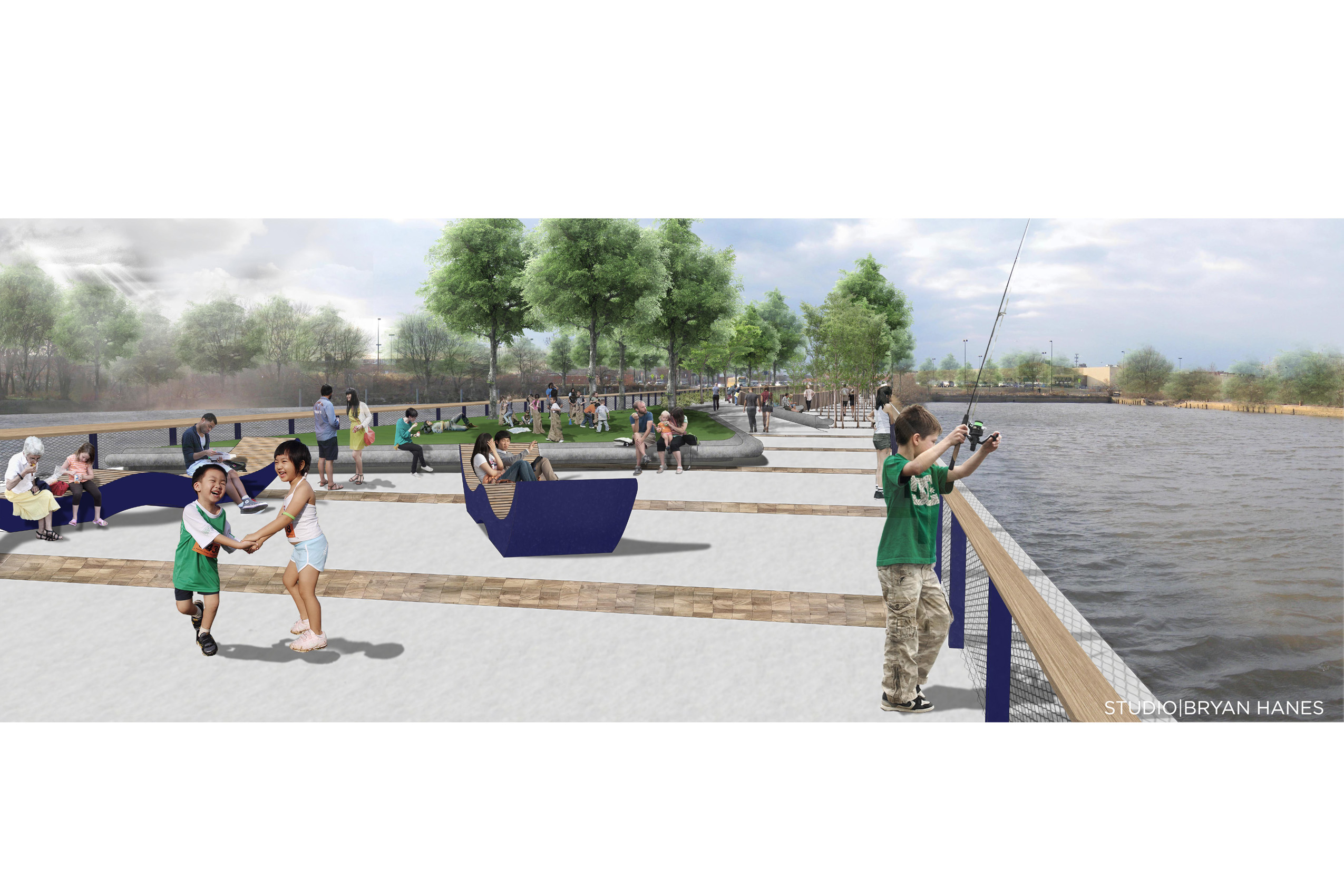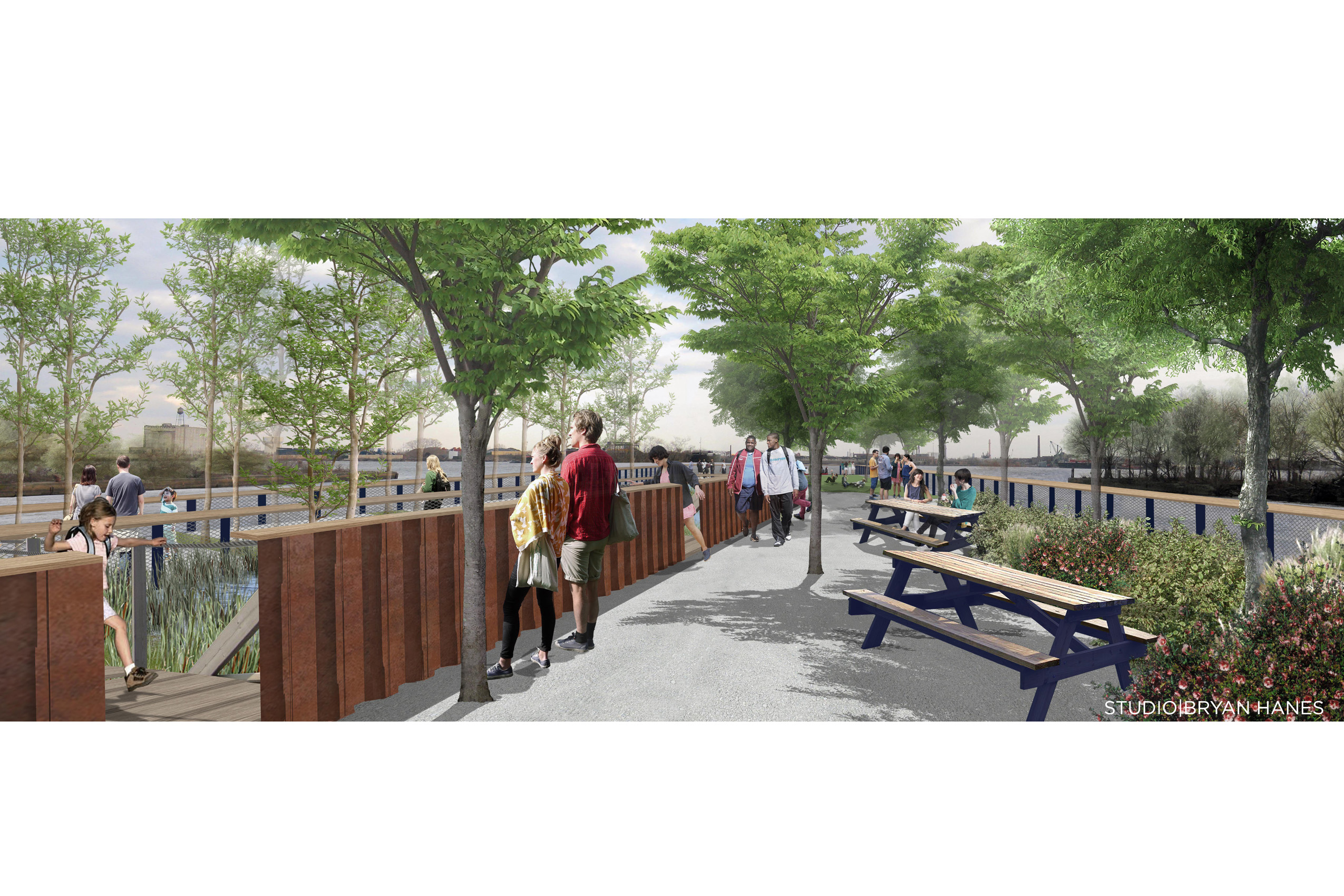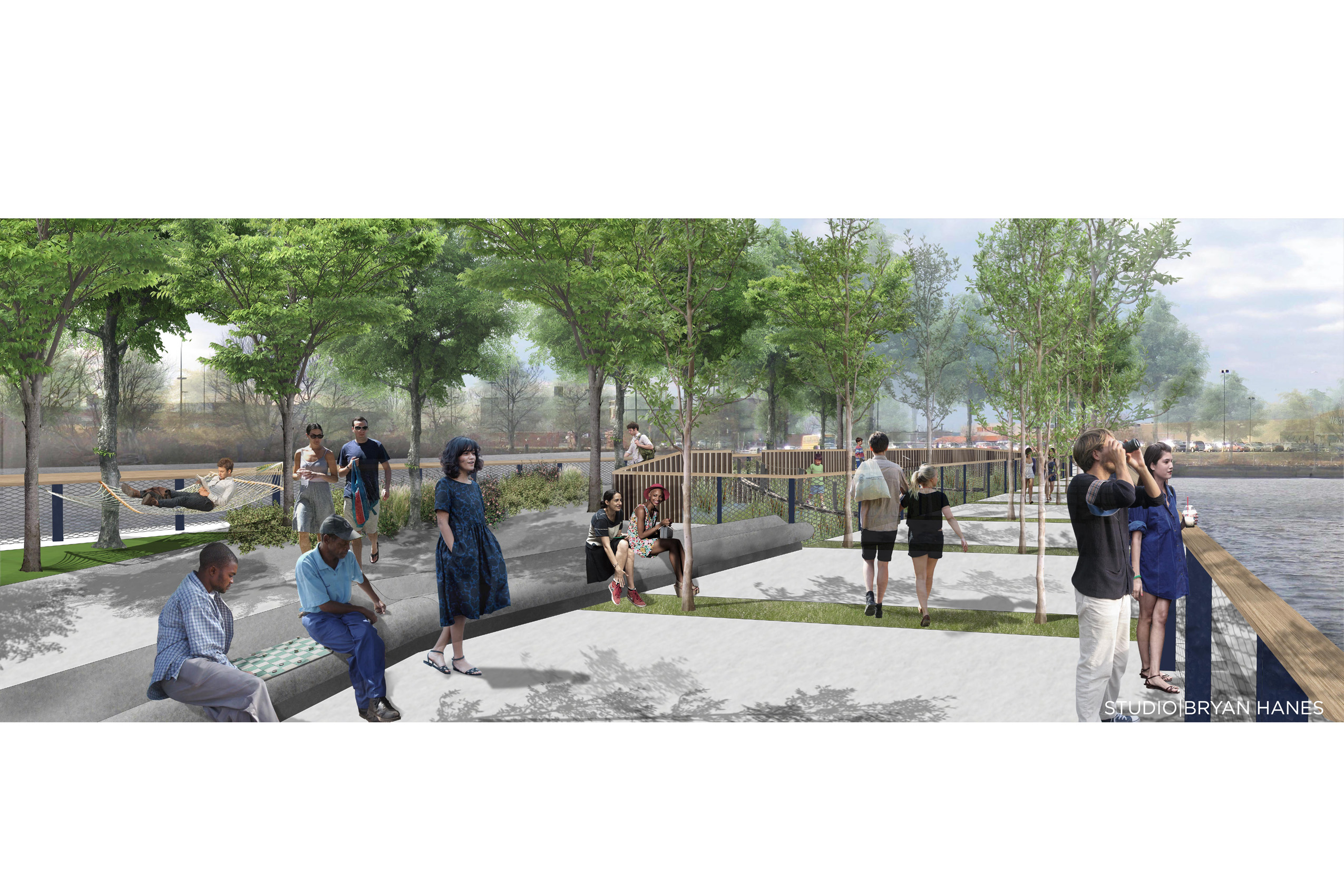Glimpses of Delaware Riverfront revival below Washington Avenue
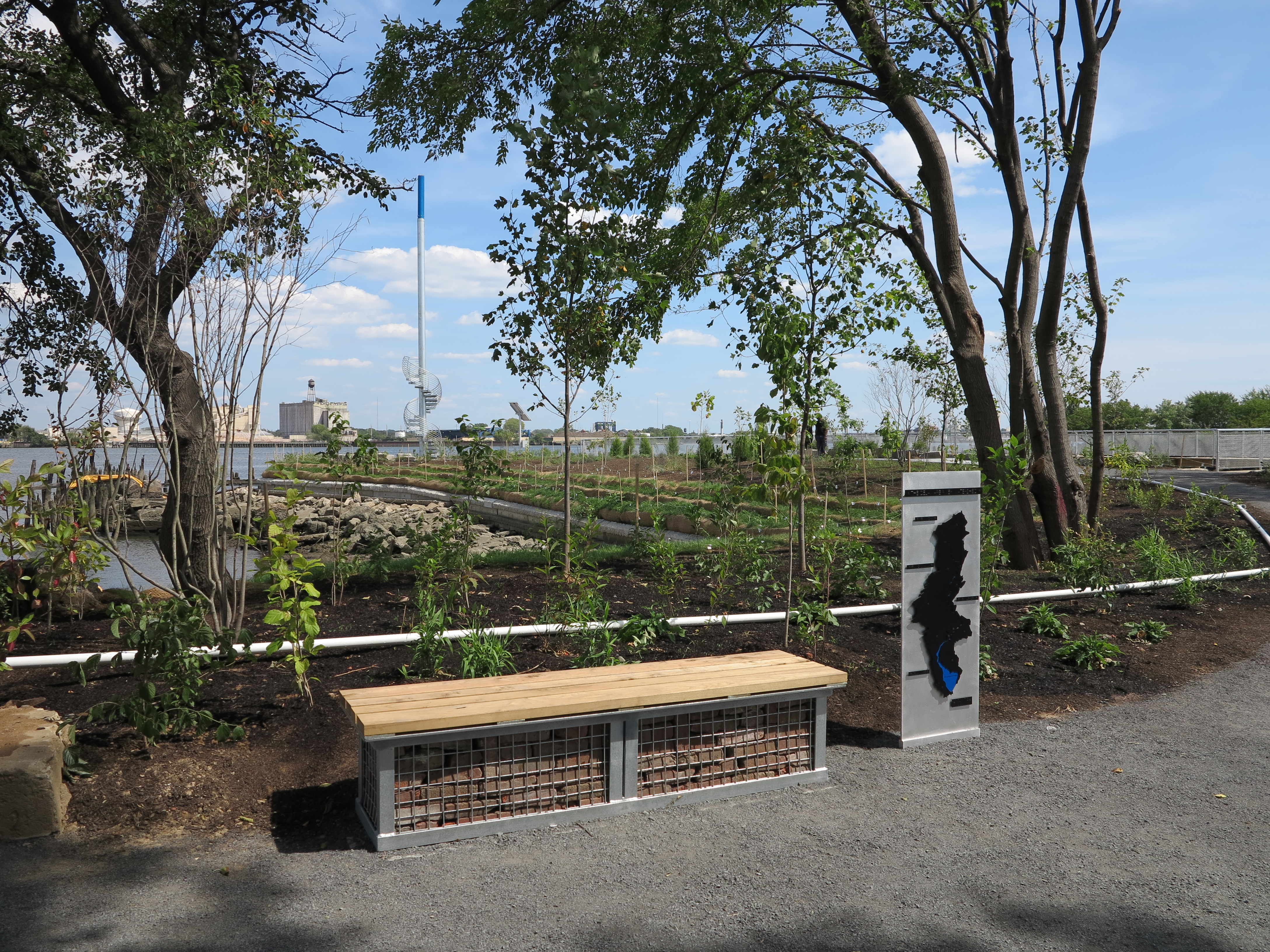
The Spruce Street Harbor Park may have stolen the waterfront thunder this year but big, more permanent, things are also happening along the Central Delaware waterfront. Perhaps nowhere is more exciting to watch that the southern stretch between Washington Avenue and the Pier 70 shopping center.
This landscape is better known for disused piers occupied by feral teens and cats, alongside big box stores adrift in acres of parking. But along the waterfront there are new moments of beauty, surprise, and – at last – a sense of cohesion. The dot-to-dot improvements are connecting to outline a reimagined waterfront that is both active and attractive. It’s becoming an actual public place.
Here the Delaware River Waterfront Corporation and its partners are turning decaying piers into park space, and building safer and stronger connections to the river.
This summer I’ve biked and walked the trail between Washington Avenue Green and Pier 70 shopping center (between Moore and Mifflin streets) and back a few times. It’s a less than a mile long, but the vision of a reclaimed and revived waterfront is coming into clearer focus, where new public spaces linked by a multi-use trail and “connector streets” reach back into neighborhoods to provide river access.
In recent years Washington Avenue Green and the trail leading south from it were the only public spaces here, tucked back between the river and commercial scrum along Columbus Boulevard. Both were built a few years ago as early-action items supporting the Master Plan for the Central Delaware, adopted by the city in 2012.
Washington Avenue Green features an environmental art installation interpreting the urban water cycle with native plants growing from cut and broken pavement. The trail is a basic asphalt number. Not bad, but the payoff for visitors was limited.
The trail entrance, between the Coast Guard building and Sheet Metal Workers’ headquarters, is easy to miss and the simple amenities beyond were hidden from view. Plus the bicycle and pedestrian connection from Washington Avenue is terrible – a huge crossing and wee curb cut do not make for a safe transition zone.
But this month the underwhelming trail entrance heralds a change: Tall letters now announce Washington Avenue Pier, a new waterfront park that opened last week, as PlanPhilly’s Kellie Patrick Gates reported.
Washington Avenue Pier is the first pier park completed on the southern reaches of the Central Delaware, built this year by the Delaware River Waterfront Corporation (DRWC) with city, state, and nonprofit partners.
It is a naturalistic wetlands park where windswept weed trees have new purpose shading wood and wire benches supported by ad-hoc bricks and wood salvaged from the site. A smooth path leads out to the tip of the pier, lined with newly transplanted small trees and native plants, salvaged tree trunks and hunks of stone. It’s plain and rustic, an ecological park in terms of flood control, habitat, and reused materials.
Because the decaying piers on this part of the river are an important wildlife habitat, particularly for spawning fish, the new parks in this area must protect that ecology. At Washington Avenue Pier the pilings and remains of the old pier surround the new park in the water. Signage around the new park explains native species, the Delaware watershed, as well as the pier’s interesting history as an immigration station.
At Pier 53 there are opportunities to get close enough to touch the water or perch above it on a sunny elevated boardwalk that affords sweeping river views. At the end of the pier artist Jody Pinto’s 55-foot tall spire, Land Buoy, lets visitors climb a spiral stair to a platform halfway up to take in panoramic views and river breezes. Think of it a bit like climbing up to a small ship’s crow’s nest, but for landlubbers. From here you get a peek at the city skyline, port life, a docked fireboat, overgrown and active piers up- and down-river, and a steady parade of boats. Visiting at low tide I saw a heron perched on a piling, preening in the sun.
Pier 53 marks the first of what planners hope will be a contiguous wetlands park along the water’s edge that would extend southward to Pier 70. The idea is to restore the river’s green edge, making room for a wider landscaped trail, to support wildlife and absorb stormwater.
Follow the trial south from Pier 53 you pass overgrown piers with peeks to the water through dense foliage, and on the other side are rear ends of Columbus Boulevard properties. The trail is lined with grasses and low-maintenance wildflowers like coneflower and black-eyed susans.
Funding to upgrade this trail segment is part of a $5 million grant from the William Penn Foundation, awarded in 2013. That grant also includes funding to turn Tasker Street into a “connector street” that provides a new, green link from Pennsport to the river. That hope is complicated because a portion of the street is private, but a solid neighborhood connection is necessary to draw residents to the river.
Next the southern end of the trail will get a robust new pier park, balancing out the public spaces along this part of the waterfront.
Earlier this summer DRWC and city officials announced that Pier 68 would become a $1.7 million pier park designed by Studio Bryan Hanes. This park will give the southernmost public part of the Central Delaware its own anchor public space and trailhead.
Pier 68 promises to blend Washington Avenue Pier’s rustic approach with Race Street Pier’s contemporary formalism. Studio Bryan Hanes knows how to design delightful park spaces that blend ecology and edge, with a little something for everyone (see Sister Cities Park and conceptual designs for The Rail Park). The designs for Pier 68 are no exception, with features like a tidal pool cutout, hammock grove, sloping lawn, picnic area, and fishing area.
Pier 68 is located behind an enormous shopping center, so for the near-term the swanky new park is bound to look out of place, like a sunflower popping up through a cracked sidewalk. But so what if it is neighbors today are the vacancy of broken casino dreams, and our waterfront Wal-Mart. (At least Wal-Mart forked over $200,000 toward the project.) The waterfront is evolving.
As these new public amenities emerge along the river it will be even more important to make the connections to the river stronger, safer, and more attractive. That means a better bike/pedestrian connection at Washington Avenue, turning Tasker into a bold and beautiful connector street, a contiguous sidewalk leading through the Pier 70 shopping center, and doing more than tree planting to address the fact that Pier 68 – the would-be jewel of this part of the waterfront – is at the end of a Wal-Mart parking lot.
Better links to safe and attractive public spaces will allow more Philadelphians to experience the Delaware River, a fundamental goal of the Master Plan for the Central Delaware. But these shifts also set the table for private development on adjacent sites. With developers like Bart Blatstein scooping up the former Foxwoods site between Reed and Tasker (again) and Eric Blumenfeld eyeing the Sheet Metal Workers site, it will be especially interesting to see how this forlorn stretch of Columbus Boulevard is reborn as a place, taking its lead from the emergent riverfront at its back.
WHYY is your source for fact-based, in-depth journalism and information. As a nonprofit organization, we rely on financial support from readers like you. Please give today.



